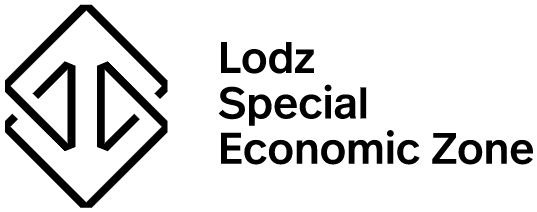If you’re managing residential or commercial properties, you’ll undoubtedly be aware of the need to carry out regular inspections.
Inspections should be completed so you can make sure that they are in a habitable state and that health and safety risks are minimised as far as possible. However, not only do they help protect the safety of the property and its inhabitants, in some cases they are necessitated by law.
Inspections ensure you are aware of internal and external property conditions at all times; they highlight the need for maintenance work; inspections give tenants an opportunity to alert the property owner to any issues; and they maintain tenant safety by avoiding any unnecessary costs/complaints. In some cases, though not all, certain inspections are a prerequisite of insurance policies, too.
So, if you’re looking for a starting point for your property inspections, or you’re unsure what needs to be included in an inspection checklist, here are a few pointers.
Types of inspection checklists
There are a range of different inspection types, each fulfilling a crucial role in maintaining the safety of a building. Whether it’s a streamline home inspection, fire door inspection, a cleaning checklist, or maintenance checklists, there are a lot of points to consider to ensure you remain compliant.
This is only general guidance, with a selection of key areas being listed, and as such these checklists are not comprehensive. For detailed, fully compliant inspection checklists and inspection templates, download the Property Inspect app.
Home inspection checklist
A home inspection involves a general or in-depth assessment of the condition and safety of a property. Property elements such as the heating, plumbing, and electrics should be checked by a qualified professional. Home inspections also typically identify damage caused by water, infestation and any other issues.
These elements might be included in a checklist for house inspection:
☑ Steps/stairs
☑ Pathways
☑ Drains
☑ Gutters
☑ Brickwork
☑ Windows
☑ Worktops
☑ Sinks
☑ Sockets
☑ Appliances (washing machine, fridge etc.)
☑ Furniture (beds, chairs etc.)
☑ Ceilings
☑ Radiators
The findings of the property inspection should be set out within a report, highlighting any material defects and cosmetic issues that have been identified. This may indicate the need for repairs and further inspections before the property is deemed suitable condition for renting or sale.
Fire door inspection checklist
While fire doors may be assessed as part of the general property inspection, it will also be necessary to arrange subsequent surveys. Such surveys should be carried out at least every six months and more regularly for busy buildings.
Again, they should be assigned to qualified inspectors (ideally those who have completed the FDIS diploma), who will identify any measures necessary to prevent the spread of fire. Requirements of legislation such as the Regulatory Reform (Fire Safety) Order 2005 should be met.
Fire door inspections should include the checking of:
☑ Gaps and seals (ensuring the correct size of gaps between the door and frame and the presence/quality of intumescent seals)
☑ Hinges and ironmongery (ensuring suitable fitting, quality, and operation)
☑ Fire door signage (with warnings being clearly displayed)
☑ Door and door frame (ensuring suitable condition and fitting in accordance with the manufacturer’s instructions)
☑ Door closers (ensuring suitable condition and operation from any position)
☑ Hold open devices (checking that such devices allow for door closure when the alarm sounds).
Once more the inspection results should be recorded, specifying any remedial actions to be taken for the safety of tenants and visitors.
Cleaning checklist
Thorough cleaning inspections will be essential, particularly in light of increased health and safety awareness following the pandemic. A cleaning inspection might highlight the following:
☑ Sweep, mop, or vacuum floors
☑ Wipe down worksurfaces, benchtops, and sinks
☑ Clean doors and windows
☑ Remove dust and cobwebs
☑ Clean any cooking appliances (ovens, microwaves etc.)
☑ Clean and disinfect toilets
☑ Clean any common areas
☑ Tidy and weed outdoor areas
☑ Remove oil and grease stains from driveways and concrete areas.
As cleaning can differ depending on the needs of the business or property, they can normally be quite in-depth. In a hospitality setting, for example, if one thing is missed it can spell disaster.
That’s why many modern property managers use software to help them track and manage all the component parts of running a property, including cleaning inspection software.
Apps typically include a variety of templates for domestic and commercial use, enabling you to maintain full compliance in the recording of identified hazards and remedial actions.
Maintenance checklist
Maintenance inspections are another key part of property management. Ensuring that the property is in a sound structural state and identifying the need for routine repairs should not be overlooked at any point.
Maintenance inspections also provide the opportunity to ensure that building occupants are fulfilling their obligations. While a visual check will be sufficient in many instances, it might be necessary to call on expert support for the inspection of electronics and any other items where there could be a health and safety risk.
A maintenance inspection may include the checking of:
☑ Smoke alarms and Co2 detectors (ensuring that they are in good working order, with fresh batteries fitted)
☑ Utilities (ensuring the connectivity and working order of electricity, water and gas appliances, where relevant)
☑ Leaks and water damage (checking for any leaks, with pipes being replaced where necessary – monitors may also be fitted for early detection and prevention of water damage)
☑ Communal spaces (ensuring general cleanliness and repair of any furniture for safety)
☑ Bins and recycling facilities (cleaning and removing any unpleasant odours, as far as possible)
☑ Cosmetic defects (applying fresh paint and repairing any damages at the earliest opportunity).
Commercial property inspection software can help with a lot of the heavy lifting, enabling property managers, facilities managers and asset managers to fulfil all their necessary inspections and immediately capture on-site issues for cost-saving predictive maintenance.
Property professionals choose Property Inspect
Complete with a range of pre-configured, customisable templates, reporting tools and more, Property Inspect should be your go-to inspection template app. While paper-based checklists can be helpful reminders, nothing beats digital, in-depth inspection templates that can be accessed anywhere, at any time.
Book a demo today to see how it can boost your organisation’s efficiency, safety and compliance.













